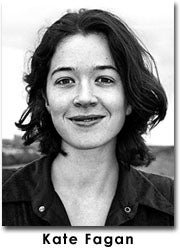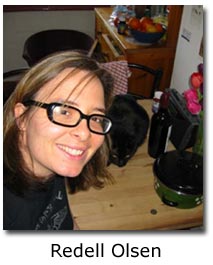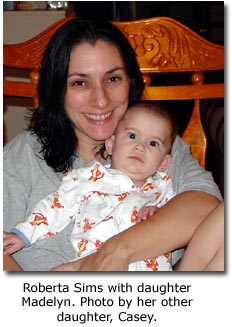

“Collision Leaking Species”
by Kate Fagan
The phrase “collision leaking species” appears in several panels of Maggie O’Sullivan’s provocative work murmur, a sequence of text-based artworks and collages excerpted in this issue’s Work/book section. As its title suggests, murmur is a graphic and partial account of what remains unaccountable and, in some way, unaccounted for: material whispers, the mechanics of an earthly undercarriage, iterations or ruptures occurring at a heart level — barely discernible by some readings and catastrophic by others. Category is torn open in O’Sullivan’s work, as formal fragments permute through a complex series of operations and terrains. murmur is a work made for wall and floor, to be shifted about, as O’Sullivan explains to Dell Olsen in an interview to accompany the feature. It literalizes a step off the page and into physical space, while acknowledging in its primary textiles (A4 pages) the plastic, flexible and pervasive temper of writing media. As O’Sullivan says, murmur develops the poetic work as “a multidimensional, kinaesthetic, sentient terrain or environment for the body to enter and move through.” It is a form of “social sculpture” (Joseph Beuys), powerful in rejecting aesthetics of neatly commodified sameness: “fabricators of canons don’t want awkwardnesses.”
Our Spring 2004 edition of How2 is a rich social sculpture, an electronic labyrinth that invites readers to abandon some formal and aesthetic presumptions as they “enter and move through” the site. In gesturing toward spatiality and disruption, “Collision Leaking Species” provides an exemplary title. Thematics of resistance, interface, habitat and leakage have emerged across all sections of this issue during production. They bear witness to a dazzling and intelligent range of poetic responses to current social, political and cultural weathers.
Each word in the phrase “Collision Leaking Species” is discrete, yet all three are brought into facing by their arrangement. A sharp kinesis occurs. “Collision” and “species” seem to be from antithetical points on a plane of events: collision implies the force of accident, while species denotes the controlling order of taxonomies and nomenclatures. They come into encounter through a leaking middle to produce an uncanny synthesis. To “leak species” might be to spill beyond standardizing charts into which we have arranged living systems. Or it might suggest new genres and kinds; perhaps those defying name, or un-writing prior “knowledges”. To follow species-logic for a moment, the word “species” emerges from specere, which also subtends the words “spectate” and “specular” — to look or gaze upon in a classificatory and objectifying manner; and also, in a less alienating light, to regard the world with a heightened sense of vigilance and inventive perception (“speculation”). Complicated habitats and damaging occupations, such as those shown daily in news media, require the attunements of critical thinking and creative action.
Thalia Field’s zoologic is one of the most interesting and ambitious works in this new edition of How2. Field scrutinizes the ideological architectures of “the species house”, with its “critical distance doled out in centimeters.” Via the animation of written text accompanied by sound, Field traverses ideational ground that connects place and spatiality (“she thinks spatially”); corporeality, gender, technology, capture and territory; ecological imperialism; and notions of home, foreignness and displacement — all punctuated by satirical insights about Heideggerean concepts of habitas and their philosophical reception. Her use of a “chorus” creates a skew in histories of dramaturgy. Field’s electronic text is made to reckon with its own means of technological reproduction: “out of character”, “out of print” and devising “multiple degrees of freedom”, even as it berates “the overcooked human packaging of the C21st.” This work defies specification in a highly informed way. Featured also in Multi-media, Susan Johanknecht, Hazel Smith, Melissa Benham and Stacey Dacheux give us works that problematize the borders of informational, bodily and social discourses, while sharing Field’s welcome engagement with a poetics of containment and space.
These matters also inflect Frances Presley’s selection of new poetry in “The Text as a Site of Resistance.” Tilla Brading and Geraldine Monk provide the stitch and the fabric with openly political shades of meaning, in relation to gendered art-making and governmental spin; while Christine Kennedy’s “Dusting the Mae West Memorial Library” explores links between sexuality, historical celebrity, image and economy. Sites of embodied resistance and memory inhabit a wide horizon of everyday circumstance and experience — as suggested by Andrea Baker’s visual poem “House”, in which transfigurations of bodies and dwellings occur in response to located grief. Hilda Bronstein’s selection of papers from the London TALKS series offers a range of perspectives on embodiment, genre and location (In-Conference), while mapping a site-specific event of critical community.
Three Special Features in this issue celebrate three very different exponents of poetic narrative, its habitats and (dis)contents. Our much-anticipated critical focus on innovative writer Leslie Scalapino presents the full text of Scalapino’s ‘Can’t’ Is ‘Night’ — a demanding and astute response to U.S. military actions in Iraq and Afghanistan, and to the occupations of language that establish and annihilate the bounds of meaning for that conflict. Made by writer Rob Holloway in London, a recording of Scalapino reading the work is available for listening. Scalapino’s phenomenological “poetic of occurrence structures” is investigated in critical pieces by section coordinator Laura Hinton, Elisabeth Frost, Jeanne Heuving, Alicia Cohen and Camille Martin; while Zack, who has collaborated with Scalapino to produce several of her performance texts live, writes about the difficulties and pleasures of staging her writings. In a lengthy interview with Anne Brewster, Scalapino describes her poetic in terms of a kinesis of being — such that a person becomes somehow inseparable from their surroundings, while consciously detaching from the ideational coercions of mass media: “I’m interested in seeing oneself as a motion, or one’s interior ideas, thoughts, almost as small minute movements that are placed against a sense of the socially constructed, to create separation as a transformation of one’s own mind.”
“Seeing oneself as a motion” could apply equally to the enduring narrative gifts offered to readers by modernist doyenne Gertrude Stein. I am very excited in this issue to present “A Narrative in Escaped Places”, a series of contemporary responses to Steinian texts and techniques. In their sheer diversity, these pieces — by Janet Neigh, Carla Harryman, Mary Ann Caws, Michael Farrell, Mark Byron, Marina Morbiducci and Rob Holloway — remind us that Stein’s formidable legacy is still unfolding, generations after her death; and that her oeuvre permits great elasticity of interpretation and rejoinder. We are honoured to include Mary Ann Caws’ tribute to feminist scholar Carolyn Heilbrun, a Steinian tracing of a very particular and circumambulatory friendship between two women. Legacy and interpretation are in the thematic foreground of Sawako Nagayasu’s compelling feature on Japanese modernist innovation, in which Sawako’s crisply balanced translations of Sagawa Chika appear alongside translations of Ema Shôko by Miryam Sas. A fascinating essay by leading Japanese critic Arai Toyomi is translated by Janine Beichman, and provides a valuable account of the socio-cultural context of modernist experiment by Japanese women poets.
How2 is a biannual journal — and the riches of this issue may take readers at least six months to unwrap and explore. As usual, Alerts features an excellent range of reviews and discussions; while Postcards has gained a new coordinating editor, Romney Steele, and promises to be revitalized in months ahead. Please check the Masthead and Updates pages for details of section coordinators, forthcoming features and writing events.
I will finish by drawing attention to some questions facing How2. Electronic journals are a curious (and leaky) species of texts, whose parameters shift constantly. As a biannual production, How2 still employs a largely print-based aesthetic when organizing its material. Several of the sections update regularly, but this accounts for a small part of the journal’s content. How might How2 explore the capacities of new media — and where to now, for web-based art forms? What kinds of communities are produced by electronic technologies, and do web-oriented forms suggest particular issues of participation and access? Are these topics gendered, linguistic, generational, cultural, spatial? Is there room for How2 to become more immediately responsive to the desires and interests of its readers, in relation to the quick transmissions of electronic technologies? Over the coming year — and across the borders of many different localities now involved in this exciting international project — we hope to explore some of these questions.
My huge thanks to managing editor Dell Olsen (London) and webdesigner Roberta Sims (Lewisburg, PA), who have worked tirelessly to bring this edition to light; to all section coordinators for your illuminating discoveries and patient toil; and to all our contributors and readers, without whom there would be no journal. Enjoy the issue.
Kate Fagan
Sydney, April 2004
HOW2
 |
Editor: Kate Fagan kfag6311@mail.usyd.edu.au |
 |
Managing Editor: Redell Olsen redellolsen@btinternet.com |
 |
Webmaster Roberta Sims rsims@bucknell.edu |
HOW2 Internet Address (Bookmark it!):
http://www.departments.bucknell.edu/stadler_center/how2
Editorial correspondence may be e-mailed to:
kfag6311@mail.usyd.edu.au
Review copies of recent books may be sent to:
Kate Fagan
26 Iredale street
Newtown, NSW 2042
Australia
Masthead (Editors & Associate Editors)
go to this issue's table of contents